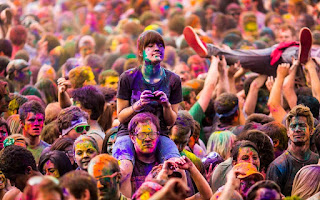Makeup in ancient Egypt
introduction
Makeup was an essential part of ancient Egyptian culture, as it was used for aesthetic, religious, and health purposes. The ancient Egyptians were known for their pioneering art of beautifying, decorating, and enhancing the face and hair, as they excelled in improving a vast array of cosmetic products. Makeup was a means of expressing individual and social identity, and it was also linked to the concepts of beauty and immortality in Egyptian culture. The ancient Egyptians used makeup not only to enhance their appearance, but also to protect their skin from harsh sunlight and disease, as they believed that cosmetics could enhance skin health. Research into the history of cosmetics reveals how the practices of performing it contributed to shaping the concept of beauty and elegance, in addition to its impact on the arts and culture in general. Makeup reveals the values and social norms prevailing in the Pharaonic era.
Pharaonic makeup
The ancient Egyptians were among the first peoples to place an emphasis on outward appearance and beauty. This was evident in their use of makeup, which was not limited to adornment alone, but also had religious and medicinal purposes.
The importance of makeup for Egyptians
The ancient Egyptians considered beauty a sign of holiness. Everything they used had a spiritual aspect, including cosmetics. Both men and women wore makeup. Makeup was often traded by merchants, especially among the upper classes. In tombs, gold cosmetic palettes have been found buried with the deceased as grave goods, further confirming the idea that cosmetics were used not only for aesthetic purposes but also for magical and religious purposes.
·Processes and tools
Small spoons and scoops for mixing powders.
Stone or ceramic containers for storing cosmetics.
Fine sticks for applying eyeliner.
Materials used in makeup in the Pharaonic era
kohl
Kohl was one of the most widely used cosmetics. It was extracted from a substance called galena, a type of black lead ore. The Egyptians used it to define the eyes in a prominent manner, not only for beauty but also to protect them from the sun and dust.
henna
It was used to dye hair and nails, and was extracted from the henna plant.
natural henna
Blush and lipstick: Made from natural ingredients such as iron oxides, they give a pink or red color to the cheeks and lips.
Oils and perfumes:
Not only was it used to smell nice, but it was also used to moisturize the skin and protect it from dryness.
hair
Ancient Egyptians regarded the first who used tools to remove unwanted hair, plus wigs and adornments to augment natural hair.
Decorative combs are some of the oldest hair accessories that archaeologists have found. Some of them are made of ivory and have elaborate animal motifs.
Combs from women's graves dating back to 3900 BC display designs that include giraffes, ostriches, and wild animals. Scholars speculate that these detailed depictions of domestic animals may be related to ritual hunting, and that women may have worn them at festivals.
Combs from women’s tombs dating as early as 3900 BCE show designs including giraffes, ostriches, and wildebeests. Scholars speculate that these detailed depictions of local animals may be related to ritualistic hunting and that women may have worn them at festivals.

ancient Egyptian comb with a giraffe










